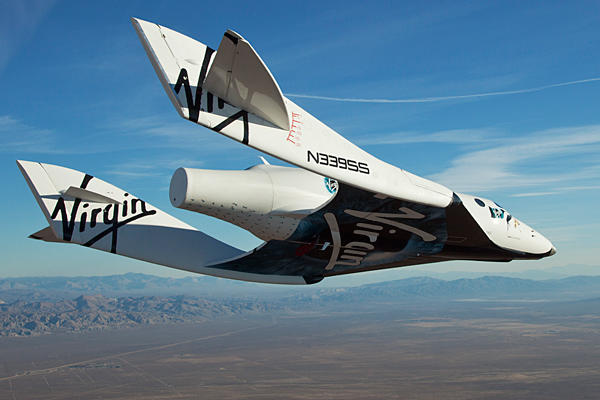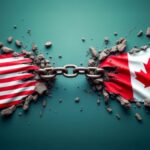November 14, 2014 – Who regulates humans going into space? For government programs such as those run by NASA, Russia’s Roscosmos, and China’s CNSA, there are rules and a protocol that space travelers must go through to be eligible to get to low-Earth orbit? But a commercial carrier is subject to what rules when it comes to passengers? In the United States other than filing for permission to fly through the Federal Aviation Administration (FAA), there appear to be no regulations for determining who can and cannot come aboard.
Of course that’s the same as when flying a commercial airliner. The FAA doesn’t apply a standard for airlines when accepting the suitability of paying passengers. All that’s required is that the passenger be notified of potential risks when they buy a ticket or during onboard safety demonstrations. And considering that more than 3 million of us fly on commercial aircraft on about 50,000 flights each day the current standard and regulatory framework seems to be working. It is only when a crash occurs that the FAA or other civilian flight administrator gets involved in investigating what happened.
For those wannabe 700 plus space voyagers who have put a deposit down (only 20 have cancelled since the crash of SpaceShipTwo) on flying Virgin Galactic to sub-orbital space there appears to be not much more than what passengers flying commercial airliners are subject to before flight. Virgin states that all passengers must go through a three-day screening program to be judged physically and mentally fit to fly. But no one is regulating that pre-screening. One hopes that Virgin Galactic is borrowing best practices from those government space agencies mentioned above but with no regulatory oversight there is no guarantee.
For that matter, what regulatory body determined whether SpaceShipTwo was airworthy at the time of the accident that occurred last month? The U.S. National Transportation Safety Board (NTSB) normally is called in whenever there is a commercial airplane crash. But what kind of permits governed SpaceShipTwo? Apparently an experimental permit for two powered test flights was issued in November of 2013 to Scaled Composites, the company that built the sub-orbital spaceplane. A number of drop tests were done with and without rocket engine aboard. And there was at least one powered test flight. But it is unclear if Virgin’s subcontractor stuck to the limits of the license. Which begs the question, who was watching to ensure the company met the restrictions of the permit?
With one of the two test pilots killed when SpaceShipTwo disintegrated, it also begs the question, who has oversight to determine the qualifications of the pilots to fly a sub-orbital spaceplane? It’s not like there are a lot of them out there. Does a person with a commercial license to fly aircraft qualify? Are there other types of licenses with “test pilot” stamped on them? With pilot error the possible cause of the accident, although a mechanical cause has not been ruled out, it would seem that lack of regulation is no longer the accident waiting to happen, but one that has already occurred.
Commercial space flight is the new frontier and like all frontiers, it appears to be writing its own rules with little in its way. In the U.S. the rationale by government has been this: no one wants to get in the way of progress in developing commercial options for getting to orbit after the NASA Shuttle program shelving.
So SpaceShipTwo’s replacement (60% built at the time of writing) and others planning commercial sub-orbital and near-Earth orbit spaceflight continue to operate in what is equivalent to the American “Wild West” of the 19th century. Commercial space operators, and in future, their passengers are like those hikers who accompanied by guides ascend Mount Everest. One in 62 die.
A lawyer and professor of space policy at George Washington University, Henry Hertzfeld, when recently interviewed by MIT Technology Review questioned if we even know how many test flights are needed to determine whether a suborbital spacecraft is airworthy enough to take on passengers. For those passengers he states, “People do those types of things because they are crazy, stupid, or thrill-seeking.” In other words, we can’t stop them if they want to be the first to die trying.
With lack of sufficient knowledge and experience related to commercial space ventures, and the lack of government willing to regulate oversight expect more accidents to happen and many more lives to be lost.














Len, here’s one where I am going to disagree with you, pretty much completely. The last thing the commercial space industry needs at the moment is more regulations, especially ones imposed in the heat of the moment as a “we have to do something” response to the Virgin Galactic accident or any other such event.
Is there any reason at all to think that more regulation would have prevented this? We have seen similar failures, many involving fatalities, throughout the history of aircraft and spacecraft development, not to mention the history of transportation technology in general. And why should we think that the government is in any better position to be telling this industry what to do than the industry itself? NASA certainly doesn’t have an accident-free record, nor does the DoD. And Congress simply does not have the expertise required. Yes, we need regulation to ensure the safety of the PUBLC while such work is going on – but I believe the current regulations imposed by the FAA and international law are more than adequate here.
This is a field which has inherent dangers, and the men and women who are involved in the testing of these craft are aware of that to a greater degree than anyone else. They accept the risk as an unavoidable, necessary part of this work. Some of them will pay for the advancement of this technology with their lives, and they deserve every bit of honor and respect we can give them. But when such loss happens, calling for “more regulation” is generally the wrong response; it is pointless, does nothing but makes the proponents of those regulations feel better temporarily and adds significant and unnecessary cost and delay to such programs.
If there was even a bit of evidence that Scaled Composites or Virgin Galactic was knowingly cutting corners in the design or flight procedures, then the cure for that lies in the civil courts. NOT in burdening fledgling industry with additional regulations written by those who are not directly working in this new field.
By the way, no, there are no licenses with “test pilot” stamped on them. Getting a job as a test pilot, as far as the FAA is concerned, requires only that one hold a commercial pilot certificate (necessary to legally fly “for hire”) plus the appropriate ratings and endorsements (e.g., multi-engine aircraft, instrument flight, etc.). And all this does is to ensure that a person has the necessary experience, knowledge of systems and regulations, etc. as required for that certificate. An official endorsement to fly a particular aircraft (a 747, say) is a “type rating” – but how could you test for something like that in the case of an aircraft which has never existed before, and whose design is being revised literally as you are flying it? That’s part of what the whole “experimental” category of aircraft is about, and you cannot fly an aircraft which is licensed in that category in commercial service. It has to complete its testing and be approved by the FAA for such service (i.e., issued its “type certificate”) before that can happen – something which clearly had not yet happened in the case of SpaceShip Two.